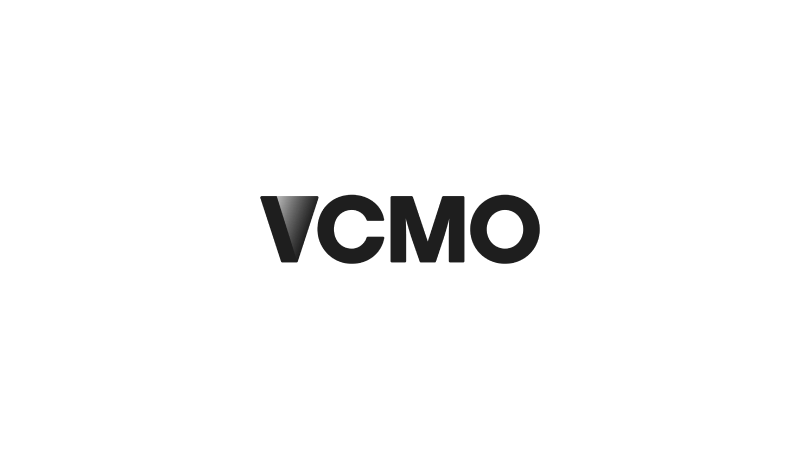Discover what a Fractional CMO really costs—and the hidden savings versus traditional marketing leadership.
Introduction
Understanding the cost of hiring a Fractional Chief Marketing Officer (CMO) is crucial for CEOs, founders, and investors who want to make informed decisions about marketing leadership. Unlike full-time hires, fractional CMOs offer flexible engagement models that can be tailored to business needs and budgets, but this flexibility means costs can vary widely.
This article unpacks the different pricing structures, the key factors influencing cost, and how these compare to traditional marketing leadership options. We also explore the often-overlooked financial benefits of Fractional CMOs, the hidden costs to be mindful of, and practical ways to maximise return on investment. Finally, we highlight the real cost of not having senior marketing leadership — a risk too often underestimated.
By the end, you’ll have a clear framework for evaluating the true investment required to bring fractional marketing leadership on board — and why it can be one of the most strategic decisions your business makes.
Engagement Models & Pricing Structures
Fractional CMOs offer a variety of engagement models designed to fit diverse business needs and budgets. Understanding these pricing structures is key to selecting the right approach for your organisation.
- Monthly Retainer - This model involves a fixed monthly fee in exchange for a set number of days or deliverables each month. It’s ideal for businesses seeking ongoing strategic leadership and continuity, providing predictability in both budget and availability.
- Day Rate - Day rates are charged per day of service, typically suited for shorter-term engagements or projects requiring intensive input over a limited period. This model offers flexibility for businesses that need expert leadership without a long-term commitment.
- Hourly Rate - Some fractional CMOs offer hourly billing, which can be useful for advisory services, consultations, or when engagement needs fluctuate unpredictably. However, this model may lack the strategic depth and commitment of retainer or day-rate arrangements.
- Project-Based Pricing - For specific, well-defined initiatives — such as a brand repositioning or a go-to-market launch — some fractional CMOs price engagements on a project basis, agreeing on deliverables and timelines upfront.
Each model offers different benefits and trade-offs. Your choice should align with your business’s strategic priorities, resource availability, and desired level of engagement.
Explore VCMO's engagements models and pricing.
Monthly Retainer
The monthly retainer is the most common engagement model for Fractional CMOs who provide ongoing strategic leadership. Typically, businesses commit to a fixed monthly fee in exchange for a guaranteed number of days per month—often ranging from four to twelve days. This model provides stability and predictability in both cost and availability, allowing the fractional CMO to embed within the leadership team and drive sustained marketing momentum.
Retainers are ideal for companies that require consistent input to oversee marketing strategy, manage teams, and coordinate cross-functional initiatives. The ongoing nature of the retainer fosters deeper understanding of the business context, enabling the CMO to anticipate challenges and adapt plans proactively.
While retainers involve a committed investment, they often prove more cost-effective than a full-time hire — delivering senior-level impact with the flexibility to scale involvement up or down as needed.
Day Rate & Hourly Rate
Day rates and hourly billing offer flexible alternatives to retainers, particularly suited for short-term projects or advisory roles. A day rate in the UK typically ranges between £750 and £2,000, depending on the Fractional CMO’s experience and market factors, with engagements spanning one to several days per week or month. This model allows businesses to access senior marketing leadership for focused periods, such as product launches, strategic reviews, or team restructures.
Hourly rates are less common but can be appropriate for ad hoc consultancy or mentorship. They provide maximum flexibility but may lack the depth of engagement needed for sustained strategic impact. Hourly billing often suits businesses testing the waters with fractional leadership or requiring expertise for discrete issues.
Both day and hourly rates offer cost control and adaptability but require clear scopes and expectations to avoid fragmented engagement and ensure value delivery.
Factors That Influence Cost
Several factors shape the cost of hiring a Fractional CMO, reflecting the complexity and strategic value of the role:
- Experience and Expertise - Seasoned Fractional CMOs with proven track records command higher rates due to their ability to deliver immediate, measurable impact across industries and growth stages.
- Scope of Work - Broad responsibilities covering brand, demand generation, team leadership, and digital strategy typically cost more than focused advisory or project-based roles.
- Industry and Sector - Specialised sectors such as financial services or life sciences may require deeper technical knowledge, influencing pricing due to increased complexity and regulatory demands.
- Geographic Location - Rates often vary by region, reflecting local market conditions, cost of living, and availability of senior marketing talent.
- Engagement Duration - Longer-term retainers can offer better value than short, intensive bursts due to efficiency in onboarding and strategic continuity.
- Size and Stage of Business - Larger or rapidly scaling businesses usually require more hands-on involvement, increasing cost relative to early-stage companies.
- Demand for Availability - Urgent or high-frequency engagement demands higher fees, especially if on-site presence or immediate availability is required.
- Complexity of Deliverables - Strategic transformation, M&A support, or multi-market coordination involves higher investment than tactical campaign oversight.
Typical Investment Ranges by Business Size or Stage
The cost of engaging a Fractional CMO varies widely depending on the size, stage, and complexity of the business. Early-stage startups or small businesses with limited marketing needs may invest in a Fractional CMO for as little as £3,000 to £6,000 per month, often on a part-time or project basis.
As companies scale, particularly those reaching £5 million to £50 million in revenue, the demand for more comprehensive strategic leadership increases, pushing monthly retainers into the £8,000 to £15,000 range or higher. Larger organisations or those with complex markets may require broader scope and more frequent engagement, justifying fees upwards of £20,000 per month.
It’s important to view these figures as investments that deliver senior expertise, faster growth, and operational efficiency — rather than just cost. Ultimately, the right investment level aligns with business goals, marketing complexity, and the expected commercial impact.
At-a-glance Cost Comparison
Comparison with Other Marketing Leadership Options
When considering marketing leadership, it’s important to understand where fractional CMOs fit relative to other options.
- Full-time CMO: Offers dedicated, permanent leadership but comes with high fixed costs, lengthy hiring processes, and less flexibility.
- Interim CMOs: Typically cover vacancies or transitions on a full-time, short-term basis and may lack the strategic continuity Fractional CMOs provide.
- Marketing Consultants: Often provide specialised advice or audits but usually lack embedded accountability and ongoing leadership.
- Agencies: Execute campaigns and projects but do not own strategy or team leadership.
Fractional CMOs bridge these gaps by delivering senior-level, ongoing leadership with commercial accountability — but without the fixed overhead or hiring delays of full-time roles. They combine strategic oversight with operational execution, offering a scalable and cost-effective alternative that suits businesses needing agility and focus.
Cost Benefits of Hiring a Fractional CMO
Beyond headline savings, Fractional CMOs deliver cost benefits through increased efficiency, reduced waste, and faster time to impact. By prioritising high-return activities and eliminating redundant spend, they optimise the marketing budget. Their strategic leadership also mitigates risks associated with poor execution or misaligned initiatives, protecting investment.
Compared to a full-time hire, Fractional CMOs avoid recruitment fees, onboarding costs, and long-term salary commitments. They also provide flexibility to scale engagement up or down, ensuring businesses only pay for what they need, when they need it.
For those interested in exploring the broader value proposition, see our article: How Fractional CMOs Help Businesses Save Money.
Hidden Costs & Value Considerations
While Fractional CMOs offer clear headline savings, it’s important to be mindful of hidden costs that can impact overall value. Onboarding time, though shorter than a full-time hire, still requires investment to bring the CMO up to speed on company culture, products, and teams. Additionally, managing expectations and integrating a fractional leader into existing workflows can demand internal coordination.
Another potential hidden cost is underutilisation. Without clear scope and objectives, Fractional CMOs may be engaged too lightly, limiting their impact and ROI. Conversely, overloading can cause frustration and diluted focus. Effective engagement requires precise alignment between the business and the CMO on priorities, deliverables, and communication.
Finally, value leakage can occur if the business lacks the internal capability to act on the CMO’s recommendations promptly. To maximise return, organisations should prepare to execute swiftly and maintain ongoing dialogue to adapt plans as needed.
How to Maximise ROI on Your Fractional CMO Investment
To unlock the full value of a Fractional CMO, businesses should approach the engagement as a strategic partnership rather than a transactional purchase. Clear goal-setting and defined KPIs provide a focus for the CMO’s efforts and enable objective performance assessment. Regular review meetings foster accountability, course correction, and alignment.
Contract terms should balance flexibility with commitment, ensuring sufficient time for the CMO to understand the business and influence outcomes. Additionally, empowering the Fractional CMO with appropriate decision rights and access to key stakeholders accelerates impact.
Integrating the Fractional CMO into the leadership team, rather than siloing them as an external advisor, enhances collaboration and buy-in. Finally, investing in effective onboarding and knowledge transfer ensures that their expertise builds lasting internal capability.
The Cost of Not Having a CMO in the Business
The absence of experienced marketing leadership can have profound effects on both immediate performance and long-term growth. Here are several common pitfalls businesses face without the right CMO in place:
- Fragmented Marketing Efforts - Without a cohesive strategy, marketing teams often operate in silos, leading to inconsistent messaging, duplicated efforts, and wasted budget. Short-term campaigns lack synergy, and long-term brand equity suffers, reducing customer trust and competitive positioning.
- Misaligned Sales and Marketing - In the absence of leadership bridging the two functions, sales and marketing goals diverge. Leads may be poorly qualified or mishandled, causing pipeline bottlenecks and lost revenue opportunities. This misalignment creates friction, slows deal velocity, and frustrates both teams.
- Reactive, Short-Term Thinking - Without a strategic roadmap, marketing becomes tactical and reactive, chasing quick wins over sustainable growth. This approach yields fluctuating results and leaves the business vulnerable to market shifts, impairing resilience and strategic positioning over time.
- Inefficient Resource Allocation - Lack of senior oversight often results in misallocated budgets and misused tools. Spending may focus on vanity metrics or unproven channels, while high-impact initiatives remain underfunded. This inefficiency leads to poor ROI and financial strain.
- Delayed Market Entry and Growth - Without decisive leadership, product launches and market expansions are postponed or poorly executed. Time-to-market delays enable competitors to capture share first, reducing potential revenue and weakening first-mover advantages.
- Underdeveloped Team Capability - Marketing teams without senior guidance often lack clear roles, mentorship, and development pathways. This limits performance, increases turnover, and inhibits the organisation’s ability to scale marketing sustainably.
- Poor Data and Performance Discipline - Without leadership driving data-driven decision-making, marketing operates in a fog of ambiguity. Lack of meaningful KPIs and reporting prevents timely course corrections, resulting in ongoing underperformance and missed opportunities.
- Damage to Brand Reputation - Inconsistent or unclear brand messaging diminishes market credibility. Over time, this erodes customer loyalty and reduces pricing power, undermining long-term business valuation and growth prospects.
Read our article: How to Measure the ROI of a Fractional CMO.
Summary
Understanding the cost of hiring a Fractional CMO is essential for businesses seeking senior marketing leadership without the commitment and expense of a full-time executive. Engagement models vary from retainers to day rates, influenced by factors such as experience, scope, industry, and business size. While headline fees may appear significant, the flexibility, expertise, and strategic focus offered by Fractional CMOs often deliver superior ROI and faster time to market. Moreover, the true cost of not having experienced marketing leadership can manifest as fragmented efforts, misaligned teams, and lost growth opportunities. By investing wisely and setting clear expectations, businesses can leverage Fractional CMOs to drive measurable impact, optimise budgets, and enhance organisational maturity — making it a strategic choice, not just a cost-saving measure.
About VCMO
VCMO is a UK-based provider of fractional marketing services, supporting B2B SMEs—ranging from funded scale-ups to mid-tier and private equity-backed businesses—through key moments of growth and transformation. Its Chartered Fractional CMOs and SOSTAC® certified planners embed strategic marketing leadership into organisations navigating product launches, new market entry, acquisitions, and leadership gaps.
What’s a Rich Text element?
The rich text element allows you to create and format headings, paragraphs, blockquotes, images, and video all in one place instead of having to add and format them individually. Just double-click and easily create content.
- By following these tips, you can make sure you’re noticed on LinkedIn and start building the professional connections you need to further your career.
-

Static and dynamic content editing
A rich text element can be used with static or dynamic content. For static content, just drop it into any page and begin editing. For dynamic content, add a rich text field to any collection and then connect a rich text element to that field in the settings panel. Voila!
How to customize formatting for each rich text
Headings, paragraphs, blockquotes, figures, images, and figure captions can all be styled after a class is added to the rich text element using the "When inside of" nested selector system.


Ready to take your marketing to the next level? Let us help you get there.
Subscribe to Our Newsletter
Fractional Edge is our montly newsletter sharing expert opinion on the latest trends in fractional leadership, curated marketing content from leading sources, VCMO events, and much more. Subscribing is quick — just add your name and email.











.jpg)





